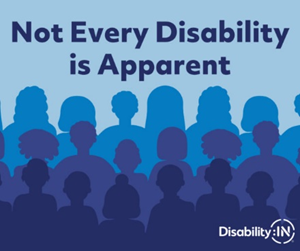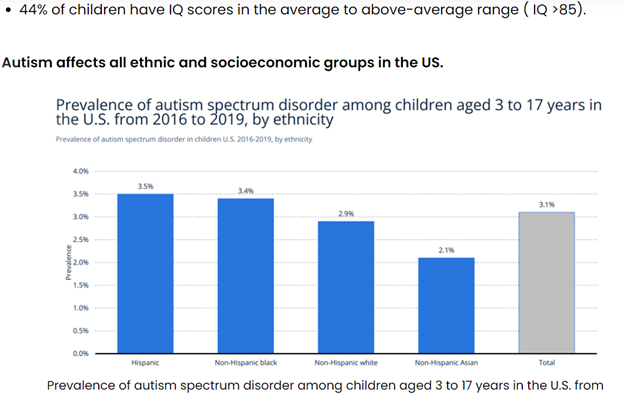
Diversity, Equity, and Inclusion: Employers are Embracing the Neurodiversity Movement to Solve the Talent Shortage
When we hear “diversity, equity, and inclusion,” some may limit the conversation to race, ethnicity, or gender. But within a DEI policy, a growing number of employers seek neurotypical and neurodivergent individuals to create a neurodiverse workforce. Neurodivergent people may include children, spouses, other family members, friends, and even yourself and represent all races, ethnicities, gender identities, educational, and other backgrounds.
Neurodivergence refers to functional variations in the human brain that may impact social connections, learning ability, attention, and mood. The term neurodiversity and the neurodivergent movement originated in the late 1990s, focusing on autism spectrum disorder (ASD). Today, neurodivergent diagnoses include ASD, attention deficit disorder/attention deficit hyperactivity disorder (ADD/ADHD), developmental speech disorders, dyslexia, dysgraphia, dyscalculia, dysnomia, intellectual disability, and Tourette syndrome.
Beginning in 1990 with the enactment of the Americans with Disability Act (ADA), employers must accommodate workers with disabilities, including invisible disabilities like autism, ADHD, and chronic fatigue syndrome. In fact, on March 21, 2023, the Equal Opportunity Employment Commission (EEOC) sued Otis Elevator Co. for failing to provide accommodations for a worker with ASD and ADHD.
Today, more companies that want to be competitive in the marketplace go beyond legal compliance and have established recruitment programs geared toward workers with disabilities, including neurodiversity.
HR Drive reported that, according to surveys, Gen Z expects DEI in the workforce, especially neurodiversity, and won’t even apply for a job with a company that does not have such programs.
A recent report by management consulting firm Willis Towers Watson (WTW) documented the benefits of DEI workplace policies: 85% of CEOs whose companies have diversity and inclusion programs say it improved their bottom line, and organizations that have high ratings for D&I policies have 70% greater success in new markets and 45% more likely to enhance market share.
Alan Price, CEO of BrightHR and Forbes Human Resources Council member, observed, “Creating an inclusive and diverse workplace culture is fundamental for success. One characteristic that is often overlooked by employers is neurodiversity.” Price added, “In my experience, [neurodivergent persons] often excel at pattern recognition and spotting irregularities, with sustained attention to detail and the ability to focus on complex and repetitive tasks over a long period of time — all of which are highly sought-after skills in business.”
Those who watched the 2021 Amazing Race heard pop culture favorite Penn Holderness, who won the round-the-world competition with spouse Kim, frequently talk about his ADHD superpowers and challenges. His ability to hyperfocus and attention to detail significantly contributed to their collecting the $1 million prize.
Yet, according to mydisablityjobs.com statistics, unemployment for neurodivergent individuals is 30% to 40%, which is 3% higher than the unemployment rate for individuals with other disabilities, and 8% higher than for individuals with no disabilities. The World Health Organization reported that adults with ADHD are 60% more likely to lose their jobs. Other reports cited by Neurodiversity in the Workplace indicate that only one in six autistic adults have full-time employment.
WTW identified trends that have increased the need to recruit and retain neurodivergent workers, which will help solve the technical talent shortage. The neurodiverse population is large and expanding; one in seven adults is neurodivergent as women, Black, and Hispanic people are often diagnosed later in life. In addition, Long-Covid is responsible for new sensory or neurocognitive problems for previously neurotypical people. In 2021, approximately 12% of U.S. college students self-reported as having ADHD, 3.5% had another learning disability, and 2% were diagnosed as autistic.
Neurodiversity: A Movement, Not Just Words
Australian sociologist Judy Singer coined the term “neurodiversity” in her 1998 dissertation, which addressed “diversity of human mind.” Singer herself is autistic and a pioneer in her field. Still relatively unknown, some refer to Singer as the “Hidden Figure” of the neurodiversity social justice movement, which “seeks civil rights, equality, respect, and full societal inclusion for the neurodivergent.”
From the late 1990s to around 2013, Forbes reports, “the Neurodiversity Movement [became] a powerful minority-rights campaign, inspiring the world’s largest companies to radically shift their hiring and talent management practices.”
International and U.S. Firms Establish Neurodivergent Recruitment and Retention Programs
Although research and support for neurodivergent persons have been in progress for over 30 years, employers were slow to embrace and support neurodiversity in the workplace
The Dutch non-profit Specialisterne Foundation and related solely owned consulting firm originated neurodiversity workforce programs; the majority of its consultants are autistic. In 2013, German-based software solutions firm SAP became the first major company to launch a neurodiversity hiring program. SAP was followed by Hewlett Packard, Microsoft, Willis Towers Watson, EY, IBM, Caterpillar, Dell Technologies, Deloitte, JP Morgan, and UBS.
In 2017, a group of 50 major companies from various industries, including financial services, software development, aerospace, biotech, energy, clothing, and more, formed the Neurodiversity@Work Employer Roundtable with the goal of expanding neurodiversity hiring programs. The Roundtable’s sponsoring organization, Disability:IN based in Alexandria, Virginia, was founded in 1994, shortly after the enactment of the Americans with Disabilities Act (ADA). Today, Disability:IN, previously known as the U.S. Business Leadership Network, helps more than 400 major corporations “drive performance by leveraging disability inclusion in the workplace and supply chain.” Disability:In partners include Jacobs and TechServe member Rangam, whose motto is “empathy drives innovation.” Rangam is also a member of the Neurodivesity@Work Employer Roundtable.
Employers with Neurodiversity Programs may offer a variety of accommodations to recruit and retain workers, including skills-based interviewing, executive function coaching, mentors, and quiet workspaces or headphones to drown out distracting or irritating noises. These efforts barely gloss over the surface of the work being done by major corporations to create inclusive teams. The Disability Equality Index (DEI) rates Fortune 1000 companies and provides a best-practice benchmarking tool. Jacobs and TechServe member Randstad earned 100 percent on the 2022 Index; the list of 2023 top-scoring companies and a new DEI report will be released on July 12, 2023.
MyDisabilityJobs.com summarized participating corporations successful experiences:
- IMB created a group with more than 1400 members supporting neurodiversity in the workplace.
- Hewlett Packard Enterprise conducted a program that showed that the neurodiverse teams are 30% more productive than the others.
- Research from a 2018 Deloitte report found that companies with inclusive cultures were six times more likely to be innovative and agile.
- A report by JPMorgan Chase found that professionals in its Autism at Work initiative made fewer errors and were 90% to 140% more productive than neurotypical employees.
- Organizations that mentor professionals with a disability reported a 16% increase in profitability, 18% in productivity, and 12% in customer loyalty.
Corporate America: A Growing Participant/Leader in the Neurodiversity Movement
Today, an increasing number of employers are establishing formal recruitment programs to hire, and retain, neurodivergent workers. In part, out of necessity: there is a worker shortage, especially a technical talent shortage in IT and engineering, and neurodivergent individuals are outstanding employees in these fields. As of Q4 2022, the unemployment rate for IT was 2.1%, and 2.2% for engineering positions. At any given time, there are hundreds of thousands of job openings in IT occupations.
Business leaders are finding that companies with diverse workforce are innovative, have happier staff, and are more profitable as neurodivergent employees are making significant contributions by increasing innovation and improving work product.
What’s Next
In Part II, we will share the personal story of what inspired Rangam, co-founders Hetal and Nish Parikh to establish neurodiversity hiring and training programs years before the major corporations started their programs.
Does your company have a neurodiversity outreach program? We would like to hear your stories.


